Why does my baby not want to sleep in the crib?
So, what's the deal with my baby resisting the crib, you ask?
I scoured the vast expanses of the internet and delved into the wisdom of countless mum-centric forums to, hopefully, find some answers. And let me tell you, the answers were all singing the same tune – which I'll happily spill the beans on below (hey, you might just find them handy).
But, here's the twist: I had a heart-to-heart with Andrea, and guess what? She's got some pearls of wisdom to drop on why those crib-averse tendencies happen, both during the newborn phase in the first few months and as your little one transitions into the toddler stage. Thus, let's dive into what she had to say:
‘One of the most common reasons why babies don’t want to sleep in their cribs is because they have never learned how to. When babies are very young, it is natural and normal for them to be held, rocked or fed to go to sleep. When they are a bit older, after about 4 months, they can become accustomed to falling asleep in someone's arms and then it can be hard for them to learn how to fall asleep in their crib. Another common reason is thinking that their cot is not their ‘real’ sleep space, but just a temporary resting pen until they get into their parent’s bed during the night!'
Andrea Grace
The possible reasons why my baby doesn’t want to sleep in the crib
I did some research across the internet and peer-reviewed studies and found a list of things that may affect the sleep of our young infants:
- Separation Anxiety: During the newborn stage, babies often develop separation anxiety, which can make them feel uneasy when separated from their parents or caregivers. This anxiety may lead them to prefer sleeping closer to you rather than in their own bed, such as a crib.
- Comfort and Familiarity: Babies find comfort in the scent and presence of their parents, which can contribute to the development of good sleep habits. Being in a crib can feel unfamiliar and less comforting compared to being held or sleeping next to you.
- Sleep Associations: Babies younger in age can develop associations with certain sleep environments or routines. If they are used to falling asleep in your arms or a specific place, transitioning to the crib can be challenging as these associations become deeply ingrained.
- Discomfort: Baby wakes frequently when discomfort due to factors such as hunger, diaper discomfort, or illness arises, making them fussy and resistant to sleep in their cribs. These issues can lead to scenarios where the baby won't sleep as soundly or easily as desired.
- Environmental Factors: Most babies are highly sensitive to noise, light, or temperature in the room, and these factors might not be conducive to sleep. As a result, they may resist sleeping in their cribs if they find these environmental conditions uncomfortable.
- Developmental Milestones: Babies go through developmental changes, such as teething or learning to roll over, which can affect their sleep patterns. These changes may lead to restlessness and crib aversion.
- Sleep Regression: Babies can experience sleep regressions at various stages of infancy. These temporary disruptions in sleep patterns can make it challenging for them to settle in the crib.
- Parental Presence: Some babies become accustomed to having a parent nearby while they sleep. If they are used to co-sleeping or having a parent in close proximity, transitioning to the crib can be met with resistance.
- Unsettled Routine: Babies thrive on routines, and any disruption in their daily schedule, including changes in their feeding, nap times, or bedtime routine, can significantly affect their sleep. These disruptions and alterations in their sleep environment can make them resistant to crib sleeping.
- Physical Discomfort: Babies may experience discomfort due to reflux, gas, or other physical issues, which can make crib sleeping less comfortable for them.
So, how to get the baby to sleep in a crib every time?
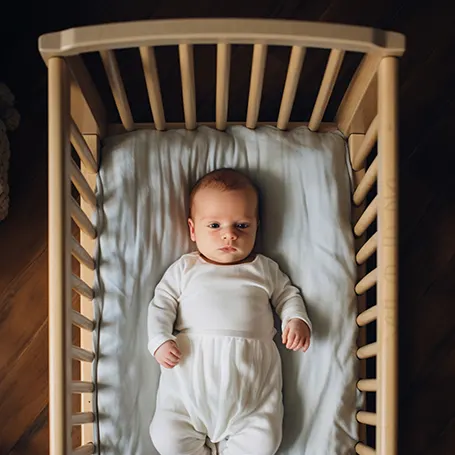
My mum, grandma, and all the wise women in my family, along with the ever-opinionated folks on baby forums and the never-ending stream of advice from mum blogs, had their say on this topic. And guess what? The consensus was pretty much unanimous – they all gave me the same advice on how to help my baby to sleep:
- Make sure you establish a consistent and soothing bedtime routine
- Create a comfortable sleep environment
- Make the transition to the crib gradual
- Introduce a soft comfort item, such as a stuffed animal or a small blanket
- Swaddle or use a sleep sack
- Invest in a good white noise machine
I even ventured into the “dark corners of the internet” and dug into the wisdom of old wives to uncover some timeless tips for helping your little one enjoy a good night's sleep in their crib. According to these seasoned sources, here are some of the best ways:
- Rock the crib while singing an old lullaby
- Give your baby warm milk
- Put a lavender or a chamomile plant in your baby's room
- Take the baby for a ride in a stroller or carriage
- Place the crib next to the window so that the baby can see the moon and stars
- Give your baby a heirloom blanket
- And, my favourite – rub a lucky charm and hope for the best!
I agree, some of these tips can be quite useful – I'll be sure to try them once I have my turn. But, once again, I've turned to Andrea and got her trusted advice on all these. Thus, according to her, some of the best ways to make your baby fall asleep in the crib are these:
Have a bedtime routine
Andrea advises more than 3000 followers on her Instagram channel that having a bedtime routine is of key importance for achieving better sleep in the crib.
‘The best bedtime routine provides a familiar series of steps leading up to bedtime and sleep. Each of these steps will in time become a mini sleep trigger for a baby. The routine can be short and sweet, providing that it can be worked into family life. It should only begin when a baby will soon be ready to sleep. The process of the routine is more important than the time at which it is carried out.'
Andrea Grace
Create a good sleeping environment
Another thing we all agree on is that many babies need an optimal sleep environment. Of course, that can vary depending on the culture. For instance, in some Scandinavian countries, parents believe that sleep training should be performed outside, in the cold. My Balkan-self could never do that. I believe in homemade woollen socks.
Of course, you and your baby do you – but, let me share with you what our expert said about creating a good sleeping environment for babies.
The most important things to consider when planning your baby’s sleep space are:
• The crib or the cot– Following safety guidelines, if a baby is under a year old, the crib or the cot should be clear of any toys, pillows, loose bedding or bumpers. Babies need to sleep on a firm, flat surface, preferably on a firm mattress.
• The lighting – Baby sleeps better in a dark room. This is because darkness encourages the production of the sleep hormone, melatonin. Having too much light in the room can slow down or stop melatonin production and cause the baby (and parents if sleeping in the same room) to be more wakeful. For this reason, a blackout curtain is a very useful thing and if a continuous nightlight is needed or one to turn on for night feeds and nappy changes, it is best to choose one with a red glow. We know from research this colour of light is “melatonin friendly.”
• The room temperature – 16 -18 degrees C. This might feel a bit cool, but it is a safe and comfortable temperature for a newborn baby to sleep in. If you, like the rest of the parents, are worried about your baby being too cold (or even too hot), consider replacing blankets and covers with a simple baby sleeping bag – as these are the best for regulating baby's body temperature.
• The sound levels – Babies sleep better in a quiet environment. Some parents use white noise machines to blank out sudden background noises and create a feeling of continuity. If sound devices are used, there are 3 golden rules: First, the volume should be 50db or below (that’s the level of quiet conversation or a fridge humming). Second, when a baby falls asleep at bedtime the environment that they are in needs to remain the same until morning. So white noise etc. should be kept on all night at a low level. And, third, if lullabies are used instead of white noise, the tempo should be no faster than a resting heartbeat. Any faster than this and a baby can feel stressed.
Don't over-help your baby
This ‘rule' is pretty controversial. People still fight over it – some claim that you should jump and hold your baby whenever it starts to cry in the crib, while others claim that that is terrible for the baby's development and that, instead, we should ‘teach' our babies that crying won't get them out of that crib.
To be honest – I too don't know what to think about this topic.
However, I can share with you what Andrea (and other medical experts have to say about this).
‘One of the biggest mistakes a parent can make is over-helping their babies when trying to get them to fall asleep and stay asleep in their crib at night. Instead of doing that, the parent should guide the baby to learn how to fall asleep without anyone's help.'
Andrea Grace
Timing is everything
Anyone familiar with sleep training knows about the importance of timing. I, my mother, and all the women I've talked to agree with Andrea:
‘Timing is important. Putting them to bed too late can cause overtiredness, which leads to broken sleep and early wakings. On the other hand, putting a baby to bed with lots of energy to spare is likely to result in crying and calling for you, and can result in them developing negative associations with bedtime.'
Andrea Grace
And, how to keep your baby from waking up during the night?
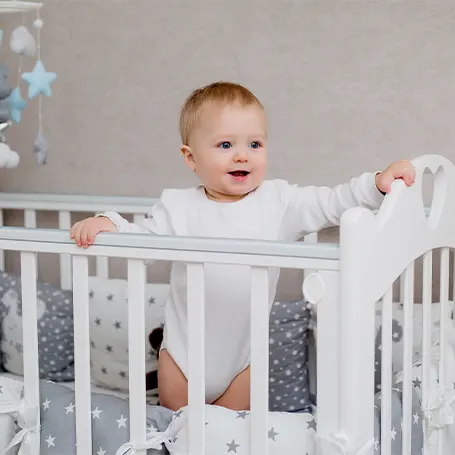
Okay, let us think that we've all mastered the skill of putting our babies to sleep in the crib. But, what about staying asleep in that crib?
Andrea has written books on the topic of gentle sleep solutions, so I put the question of how to get your baby to stay asleep throughout the night to her;
‘All babies wake up naturally during the night, due to their sleep cycles. ‘The problem comes when they aren’t able to go back to sleep without help. So if babies learn how to put themselves to sleep at bedtime, they are more likely to be able to join their sleep cycles when they wake later.'
When that happens, that is, when we have a baby who's wide awake, Andrea suggests using the so-called ‘Comfort Ladder’ that parents can use to help their baby settle back to sleep once they’ve checked on and attended to them.
Here are the principles of the Comfort Ladder:
- Leave them alone if they’re awake but not crying.
- Comfort them in the cot for 5 minutes (or longer if they are starting to calm.)
- Pick them up in your arms and cuddle them if they are not settling after 5 minutes of comforting in the crib.
- Offer a drink or a feed if they are still unsettled after 5 minutes of being held.
- Cuddle, rock, bounce or feed them back to sleep if they continue to be upset.
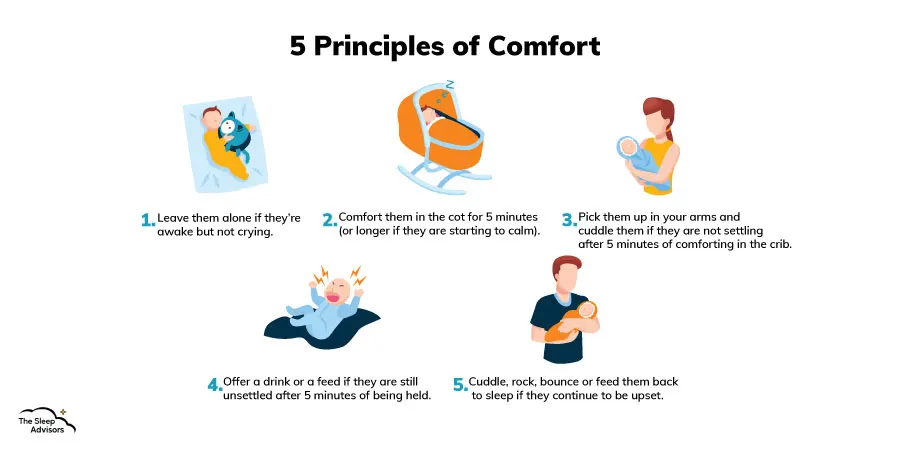
How much sleep do babies need at different ages?
Let's not waste words on this one. Instead, just take a look at this chart:
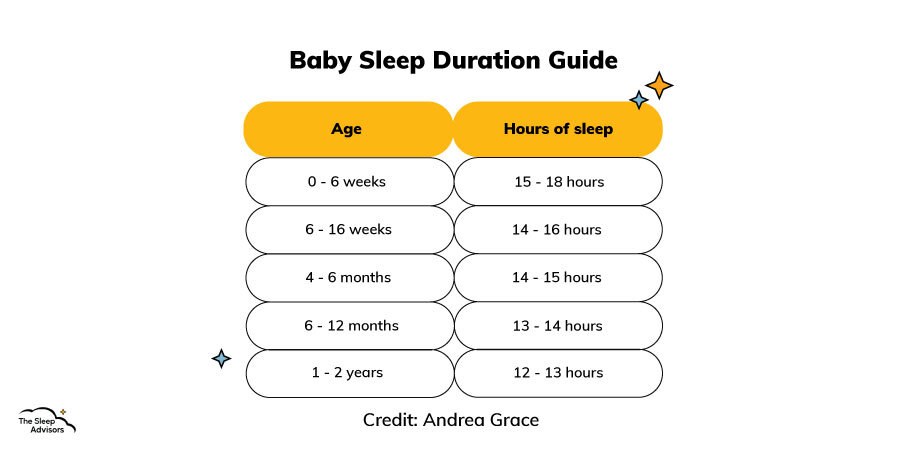
Conclusion
In wrapping things up, it's clear that we all want those blissful nights with our little ones snoozing soundly in their cribs.
Our go-to source, Andrea Grace, a highly experienced and world-renowned baby & child sleep consultant and registered nurse, has provided us with rock-solid guidance you can trust.
Plus, we've scoured the vast realm of online tips and tricks to give you a comprehensive toolkit.
Just remember, every baby is unique, so feel free to carefully experiment until you discover what clicks best for your bundle of joy. Here's to many nights of peaceful zzz's for both you and your little sleeper!
Spread the word
Recommended reading:


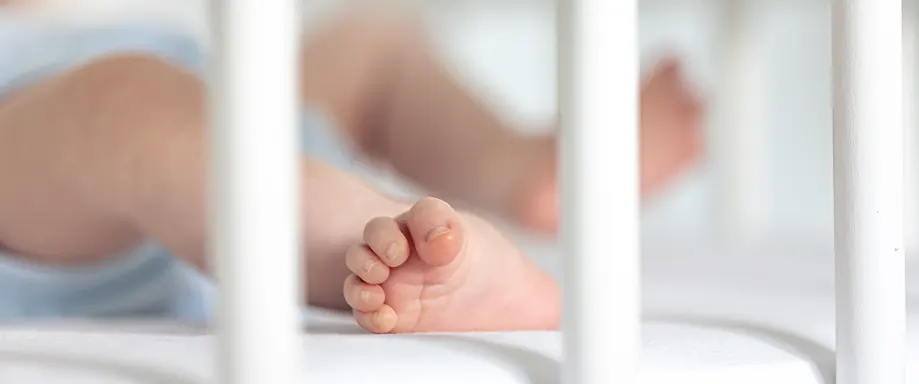




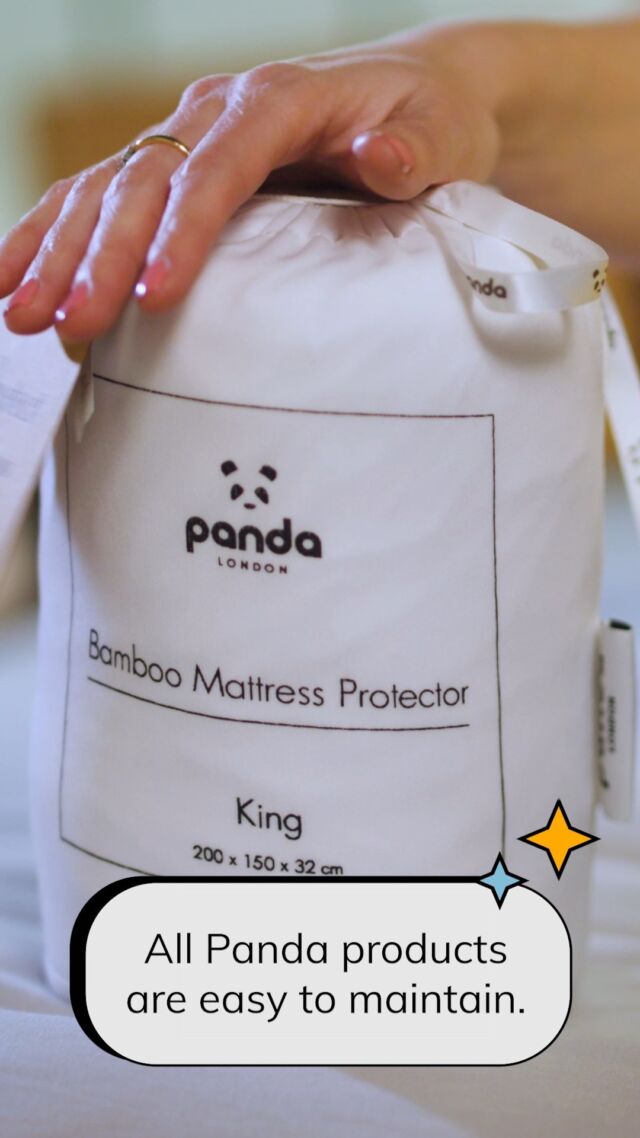





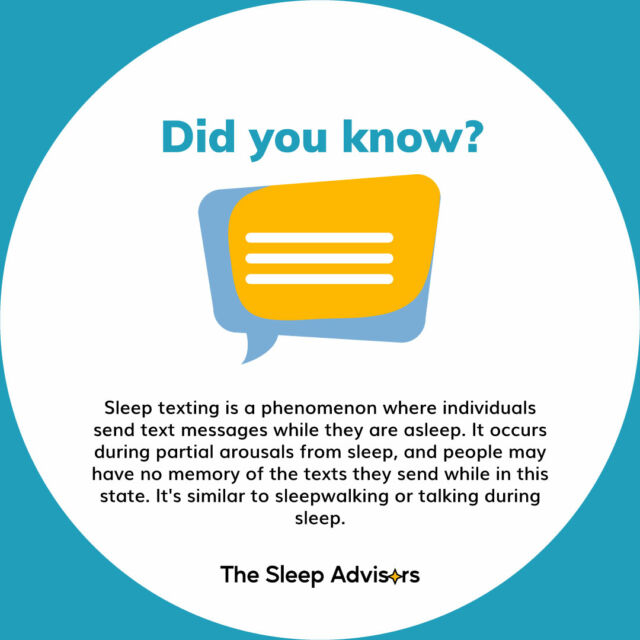
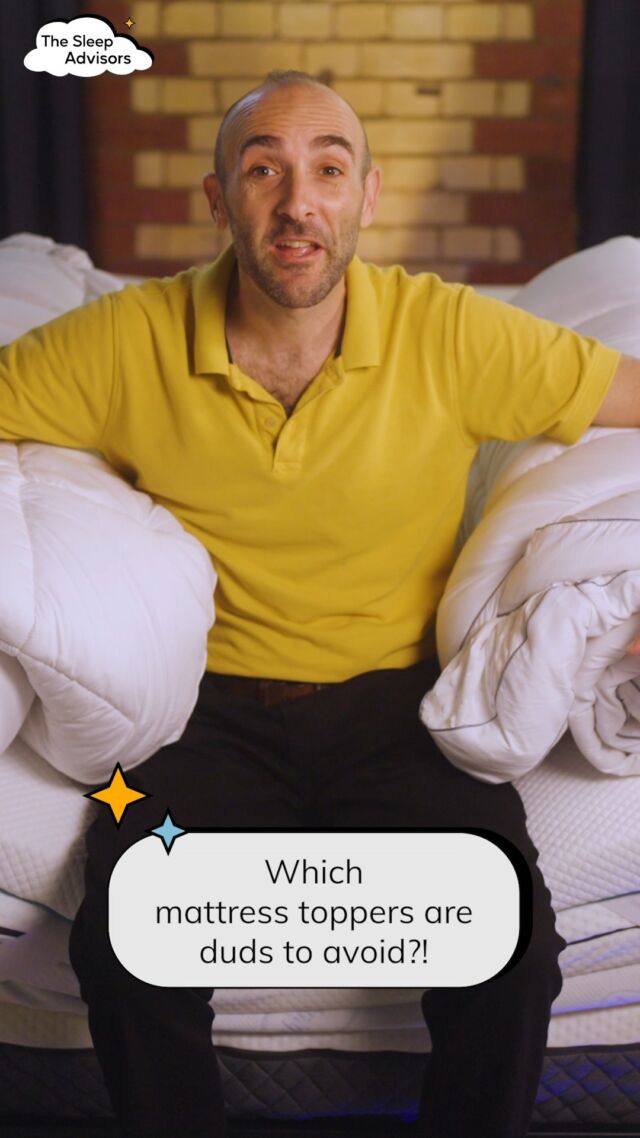

There are no comments yet
"*" indicates required fields